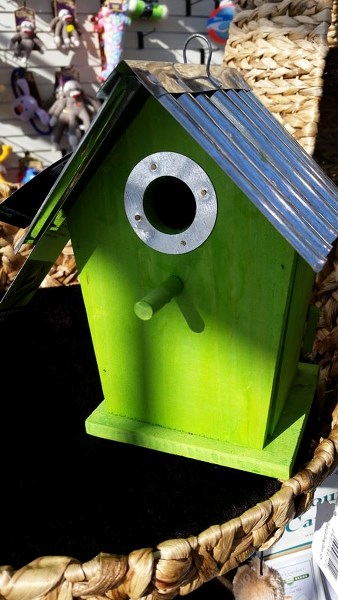Maybe it's the last of the snow mould. Maybe it's the dregs of winter still hanging around and the copious quantities of sand on the road and sidewalks. Maybe it's the fact that the snowbirds are coming home with tales of roses in Arizona, but nonetheless, there's something spring-like in the air right now – an itch for green.
Go ahead and paw down with a mitten covered hand and try to find the green. Unless you have artificial turf, nothing about the exercise will conjure up spring and instead, most likely what you'll find is brown grass covered with the aforementioned sand and cobwebby-looking mould.
The tulips did make a brief appearance earlier in March. There's an especially nice row of them up against the west wall of the St. Albert Royal Canadian Legion. But after that last snowfall, many of these bright harbingers of spring turned brown.
"The tulips will be fine," said Jim Hole of Hole's Greenhouses and Gardens. "They may get a little brown tip but we didn't have deep, deep cold so there won't be physical damage. Most likely they like the moisture, so when it's time for them to bloom, they'll be in great shape."
Well yes! They probably will be when they finally bloom in May. By then the brownness will be over and the leaves will be popping out on the trees. Meanwhile, where's the green?
If you are itching for green, here are four things, which might help chase away the brown – and if need be the white too.
Seed packets
Almost every grocery, hardware and gardening centre has green packages of seeds for sale. The urge to plant seeds in spring likely goes back to the Neanderthals but the process takes a lot of gardening labour at this time of the year.
Check the back of the package to see how long the germination time will be for the green thing you wish to grow.
Late March and early April is a good time to start tomatoes but it will take almost two weeks before you see the first green sprouts. Early Girl Tomatoes are your best bet, because they will fruit in approximately 52 days. Sweet 100s take 62 days from seeding to harvest.
Birdhouses
Nothing says, "Spring!" quite as nicely as having a birdhouse full of baby birds nearby.
Whether you build a house or purchase one, check the diameter of the entrance hole. House wrens prefer a hole 1 1/4 inches in diameter, while a black-capped chickadee will nest down in a house with a hole that is 1 1/8 inch in diameter. Purple martins prefer holes 2 inches in diameter and bluebirds will settle for a house with an entrance 1 inches in diameter.
Birdhouses should have a hinged roof or a removable side or floor so the house can be cleaned each year. This helps prevent disease. Do not paint or varnish the interior of the little abode, because this could make the babies sick.
Gardening courses
St. Albert Botanic Park lecture series runs every Wednesday evening from April 1 to May 27.
"The lectures are a fundraiser for the park," said past president Margaret Plain.
The lectures are offered for $25 each or three for $20 each and refreshments are served during the break. Courses take place in the John Beedle Centre at 265 Sturgeon Road from 7 to 9 p.m. To register call 780-458-7163 or email [email protected].
The list of topics and speakers is as follows:
April 1, Richard Heetun, Grafting for Beginners; April 8, Leone Eaton, Caring for your dahlias; April 15, Tam Andersen, Taking your vegetables to new heights; April 22, A Cactus in a tea pot…imaginative gardening, Michiel Verheul; April 29, (no speaker as yet); May 6, Hardy Roses, Lorna McIlroy; May 13, creating an English cottage garden, Derrick Harrison and Helen Forrest; May 20, Keeping your trees in tip top shape, Lillian Poirier; May 27, Plant pests, Dr. Ieuan Evans.
Wasps, butterflies and reeds
Green, jar-shaped wasp nests work well because once the critters crawl inside to get whatever juice or syrup you have put there, they cannot fly out again. A similar homemade device can be made by cutting the top off of a one-litre-sized pop bottle and then putting the top upside down and back into the bottle. You'll still catch wasps, but an old pop bottle isn't nearly as pretty as the green glass jars shining in the sun at Hole's Greenhouses.
Similarly, green watering cans, green paper butterflies and sticks of green grass-like reeds are purely decorative. The reed especially will make you smile and perhaps start humming, "It ain't easy being green!" Put them on the deck, or stick them in a muddy pot and enjoy.




